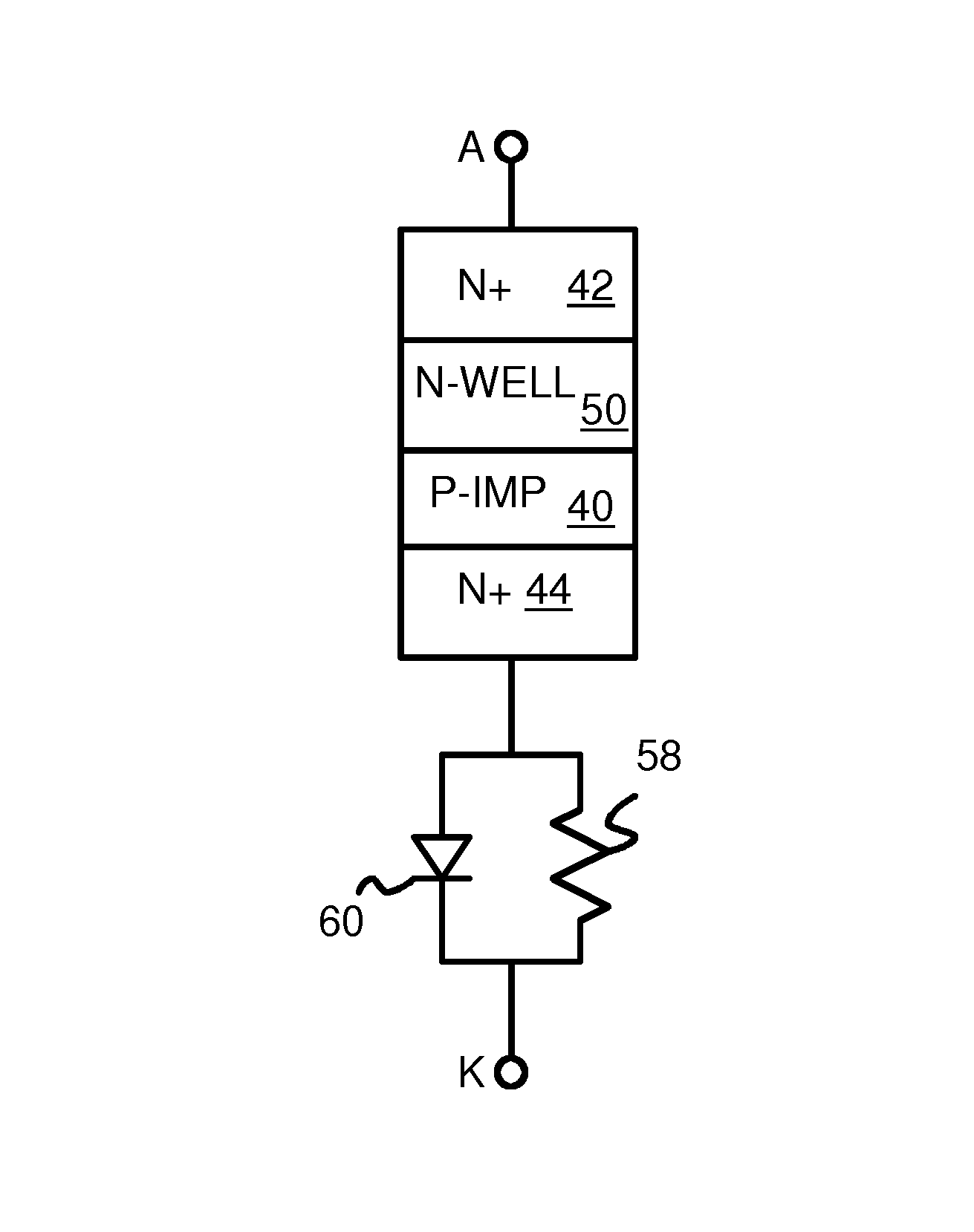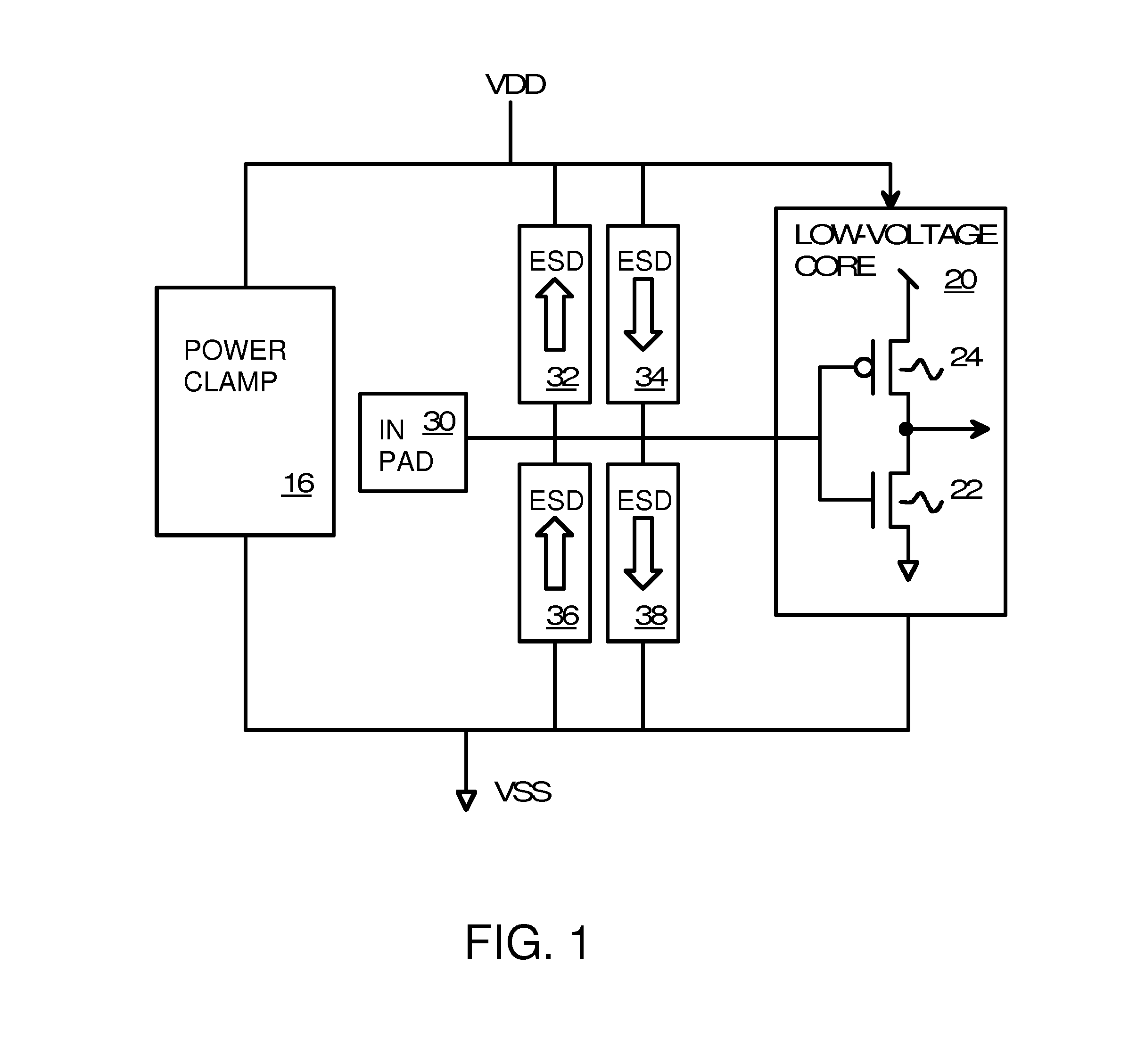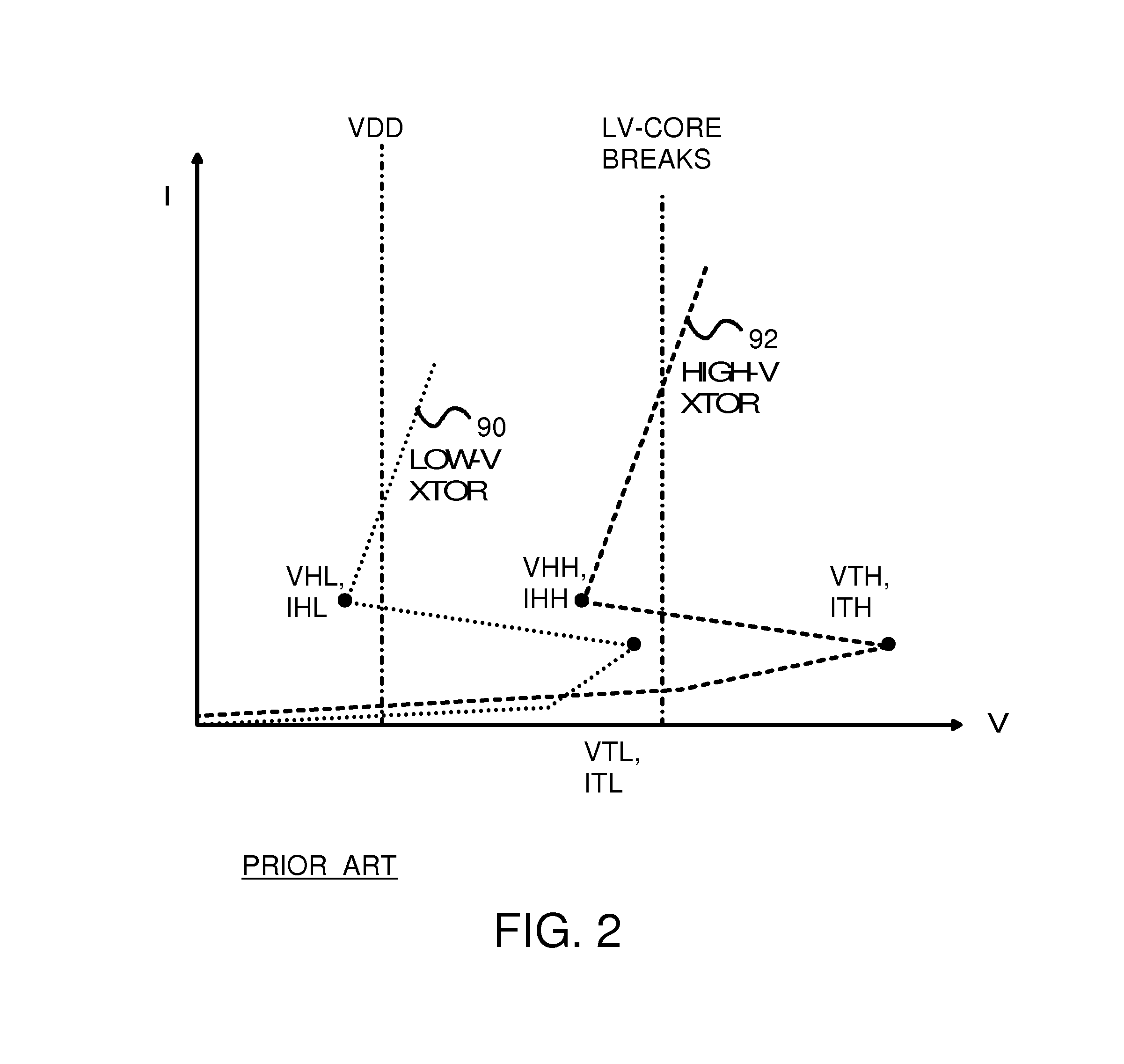Electro-static-discharge (ESD) protection structure with stacked implant junction transistor and parallel resistor and diode paths to lower trigger voltage and raise holding volatge
a protection structure and electrostatic discharge technology, applied in the direction of transistors, electrical apparatus, semiconductor devices, etc., can solve the problems of esd failure in the factory, prone to damage and failure of integrated circuits (ic's), and lowering yields
- Summary
- Abstract
- Description
- Claims
- Application Information
AI Technical Summary
Benefits of technology
Problems solved by technology
Method used
Image
Examples
Embodiment Construction
[0026]The present invention relates to an improvement in ESD protection circuits. The following description is presented to enable one of ordinary skill in the art to make and use the invention as provided in the context of a particular application and its requirements. Various modifications to the preferred embodiment will be apparent to those with skill in the art, and the general principles defined herein may be applied to other embodiments. Therefore, the present invention is not intended to be limited to the particular embodiments shown and described, but is to be accorded the widest scope consistent with the principles and novel features herein disclosed.
[0027]The inventors realize that an ESD implant may help to lower the trigger voltage, but the holding voltage may still be too low. The inventors realize that the holding voltage may be increased by adding a resistor path in parallel with a diode path. The resistor path sets the trigger voltage, while the diode path shunts a ...
PUM
 Login to View More
Login to View More Abstract
Description
Claims
Application Information
 Login to View More
Login to View More - R&D
- Intellectual Property
- Life Sciences
- Materials
- Tech Scout
- Unparalleled Data Quality
- Higher Quality Content
- 60% Fewer Hallucinations
Browse by: Latest US Patents, China's latest patents, Technical Efficacy Thesaurus, Application Domain, Technology Topic, Popular Technical Reports.
© 2025 PatSnap. All rights reserved.Legal|Privacy policy|Modern Slavery Act Transparency Statement|Sitemap|About US| Contact US: help@patsnap.com



